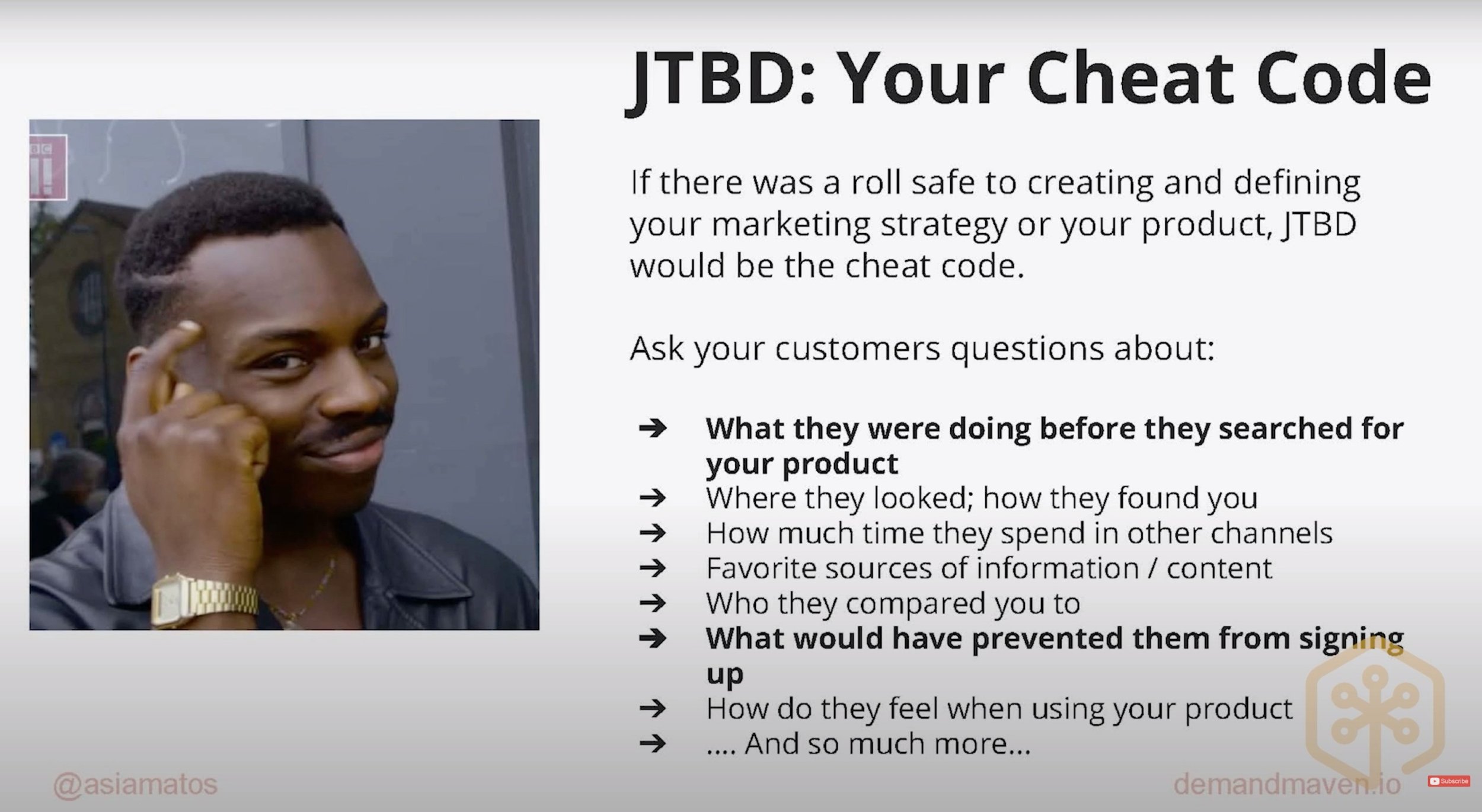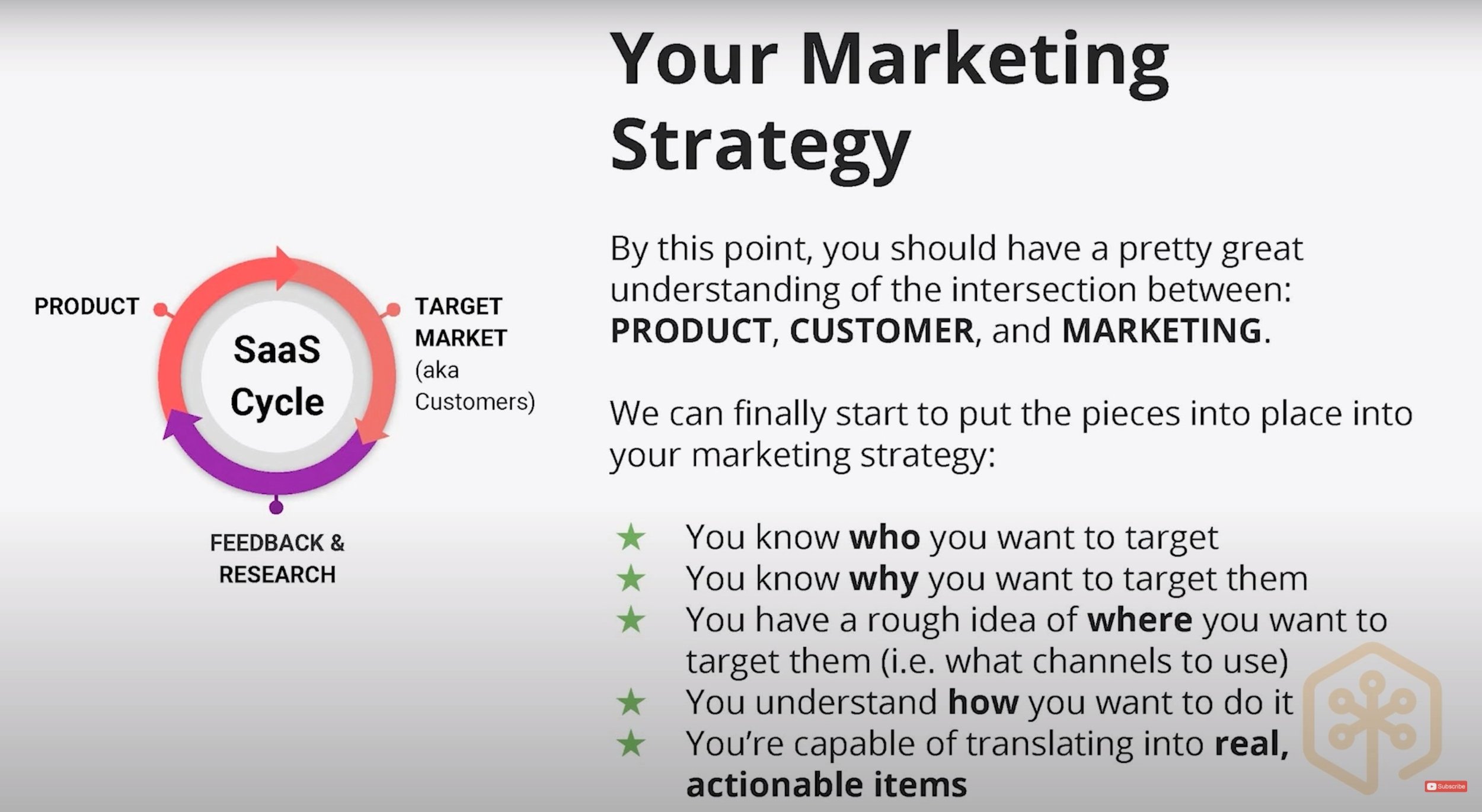Actionable tactics and strategies to land your first 100 customers
The customer journey isn't linear. Long gone are the days where a visitor can come in at the top of the funnel and convert all the way down seamlessly. Some can argue that it never really existed, to begin with.
The reality is that the customer journey is all over the place. People can jump in at any point in the customer journey, and they can exit at any point in the customer journey.
So, what’s a founder supposed to do to get their first 100 happy customers?
It turns out it is all about getting back to marketing fundamentals.
In this post, we’re sharing actionable strategies and tactics from a talk that Asia Orangio gave at MicroConf Starter to help you get in front of your target audience and land your first 100 customers.
When you should stick with sales instead of marketing
While this post is all about marketing, marketing won’t solve all growth-related problems. There are some use cases where you should absolutely stick to sales instead of marketing, including:
You needed MRR yesterday - If you absolutely need quick money coming in, your best bet is sales and usually outbound prospecting (in the form of cold emails and cold calls)
You couldn’t get any customers or prospects on the phone - Your marketing playbook shouldn’t be based on theories. If you are unable to get people on the phone, then you haven’t even started.
Start with customer research
Bottom line: Your customers will tell you how to market to them, but you do have to ask. You have to ask the right questions and actually do the research.
Through prospect and customer research, you’ll be able to determine:
Preferred marketing channels
Potential partnership opportunities
Content ideas
Knowledge gaps
Objections and barriers to entry
The “jobs” they “hire” your product for
Enter The Jobs-To-Be-Done framework.
This customer research framework is your cheat code for creating and defining your marketing strategy.
On these calls, you do with prospects and customers ask questions like:
What were they doing before they searched for your product?
Where did they look to find your product?
How much time do they spend on other channels?
Favorite sources of information/content?
Who do they compare your product to?
What would have prevented them from signing up?
How do they feel when using your product?
These customer research calls might feel awkward at first, but doing the reps is how you’ll be able to understand more about your customers.
You might even be wondering who will be willing to talk to me. However, if you're solving a real pain point, people are going to want to talk to you. Even if you're not solving a pain yet, you can position it much more as I would love to solve a pain for you. Let's figure out how we can do that together.
Conduct a funnel analysis
If you have even a couple of customers, the next thing you should do is take a look at your current funnel.
You need to figure out what your baseline is for your customer acquisition efforts:
For instance, how many demos or free trials turn into paying customers?
How much traffic to turn into a free trial?
How much churn?
In addition, you’ll want to look at prospect and customer behaviors in your app too, like:
What are the behaviors of a great customer when in-app?
Does your current onboarding process facilitate that?
Some helpful free and paid tools that can help you with your funnel analysis are Baremetrics, Heap, Fullstory, Hotjar, and Google Analytics, just to name a few.
Differentiate between TOFU vs. BOFU marketing strategies
The biggest mistake that many new founders and marketers alike make is starting at the top of the funnel.
“The bottom of the funnel is very 1:1,” says Asia. “Top of the funnel is one to infinity. I’m not knocking top of the funnel, but it's gonna be all about awareness building and going broad, and that's okay. So you're gonna need that overtime for sure.”
Focus on BOFU activity first
However, when you are starting out, a much better way to get traction is to start with BOFU strategies.
Start with people at the BOFU who are already experiencing the pain that your product solves.
For instance, we're looking for that one conversion point that you want as a business owner that could be signing up for the free trial, requesting a demo, or an actual purchase. It is the revenue generating action you want someone to do and everything that happens right above that. That’s the BOFU activity you should focus on. It doesn't matter if you have 0, 10, or 100+ customers.
This is where you should start laying your marketing foundation. The reason for that is because if you start at the top and try to work your way down at the bottom, it's to figure out what you need to be doing at the top of the funnel to make a bottom of the funnel activity happen. Ultimately you're not gonna know who they are until they convert until they sign up on something, which means if you're doing a lot of guessing at the top of the funnel, you're gonna be doing a lot of guessing by the time that they get to the bottom of the funnel, which means you might not be getting the results that you actually want or the right people as well.
That's why you should start with people who have the pain. If we start with people who have the pain first (at the BOFU), we can actually reverse engineer the way that we think about what channels and marketing strategies we need to do to get more customers just like them.
So, if we start at the bottom, it's about solving a pain for those customers. And, then we can move up to the middle of the funnel, which is about teaching people about this pain. And then we move all the way up to the TOFU, where they don't necessarily need to have a pain, but they look kind of like the people who might.
Owned vs. paid vs. earned marketing channels
Starting at the BOFU is how you can land your first 100 customers. However, the marketing channels you use at this point will depend entirely on your customers.
Regardless of the marketing channels you use at the BOFU, they will all fall into one of three categories:
Owned - these are the channels that you own and have control over, like email marketing, blog posts, etc.
Paid - these are marketing channels like Google Ads, Facebook Ads, TikTok Ads, podcast sponsorships, Youtube ads, etc.
Earned - these are marketing channels that are usually built on establishing relationships like word of mouth, partnerships, communities, guest posts, and press features.
You need to be able to answer this question:
What did your prospect do to immediately solve their problem?
For instance, you need to know the actions and behaviors that people take right before they sign up for your product. What actions are they taking to try and solve this pain point? And, what do they do to make this decision?
So, if they are going to a review site like G2 Crowd or Capterra to research solutions first before they make a decision, review sites are an example of a marketing channel that you should explore at the BOFU.
Or, maybe they are searching Google. This means that you might want to invest in SEO or paid Google Ads.
The marketing strategies you employ at the BOFU is all about making sure your product is easily accessible where your potential customers are already searching for answers to their pain point.
Then, you are going to layer on additional marketing channels over time to drive education about this problem (i.e. MOFU) and awareness (i.e. TOFU).
Pro Tip: If you decide to go with paid ads, just remember it is usually the easiest thing to turn on and also the quickest way to burn a lot of cash. Many early-stage SaaS founders have gotten too addicted to paid ads early and didn’t invest in building anything else. This makes for a depressing LTV to CAC over time.
Run your first BOFU tests
So, you’ve done your customer research, analyzed your funnel, and have a solid understanding of your BOFU marketing channels, now it is time to run your first marketing experiments.
These first BOFU tests should include the following:
It must directly correlate with solving your prospect’s pain.
It must be in channels that they have described
You should use your customers’ exact words in your messaging.
The goal is to keep running these experiments until you find something that works that you can double down.
Define your marketing strategy
By this point, you should have a pretty clear understanding of the intersection between product, customer, and marketing. This means you can now start to build your marketing strategy, including:
You know who you want to target
You know why you want to target them
You have a rough idea of where you want to target them (i.e. what channels to use)
You understand how you want to do it
You’re capable of translating it into real, actionable items
As you build your marketing strategy, here are some potential missteps you want to be careful of:
You have conflicting marketing strategies - what you’ve defined either compete with each other or pit teams, like marketing and sales, against each.
Not enough resources to dedicate in any one direction - If every person on your marketing team is focused on something different, you might not move in any direction.
Nothing adds up - Your goals should be realistic with your current funnel conversion rates.
Execute on your marketing strategy
Smart execution is always going to be your number one threat. Even if you have the worst marketing strategy on the planet, you'll never actually know until you do it.
You need to commit. Set deadlines, and actually start to execute on the marketing strategy you laid out.
As you execute your strategy, you’ll learn a lot. You’ll see things that work. Others that don’t work. You need to keep talking to customers and experimenting. This process never ends.
Prioritize customer feedback
One of the ways to avoid getting stuck at growth plateaus is to prioritize customer feedback.
As you start to acquire more customers, You're gonna get more interesting feedback. You're going to hear different channels. That's going to influence your strategy.
The goal is to prioritize momentum over results. When you are executing consistently and have momentum with your ideal customers, it is impossible not to see growth over time.
Pro Tip: Remember MRR is a lagging indicator of what you were doing in the previous months.
***
Whether you are looking to get your first 100 customers or 1,000+, the number one rule is to give people what they want. If you're solving a pain, give them what they want and find ways to get in front of them when they are making that decision.
Want to see even more practical tips about landing your first 100 customers? Watch Asia’s talk here.


